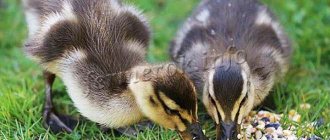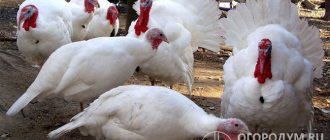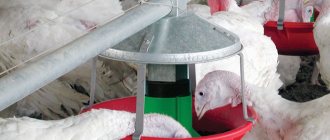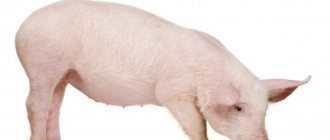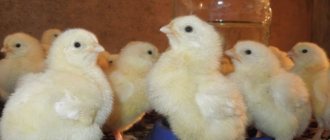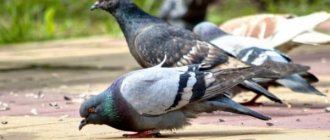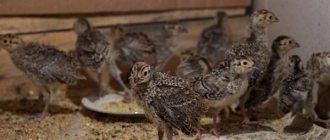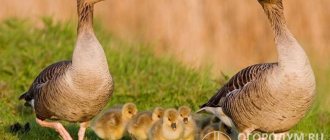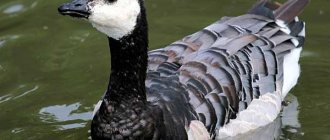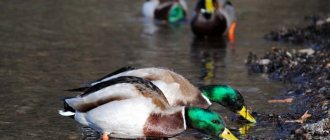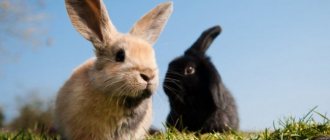Thanks to the popularization of a healthy lifestyle, turkey meat has recently been in great demand among the population. Unlike broiler chickens, turkey is much tastier, healthier and more nutritious, but it is also more demanding in terms of care, as well as the quality and composition of feed. This especially applies to broiler crosses, which are superior in growth rate to any other farm poultry. To achieve a decent result, the poultry farmer must know what to properly feed turkeys for rapid growth at home.
Broiler turkeys require serious attention to nutrition and maintenance
What to give to turkeys?
Nutrient standards in feed for turkeys
Turkeys are not picky eaters, so they usually eat what they are given. And this is not at all as good as it seems, because for normal life, the proper functioning of all organs and systems, this bird needs certain substances.
- Vegetable protein should make up about 70% of the poultry diet. There is a lot of it in peas, buckwheat, wheat and oats.
- Animal protein makes up up to 30% of a bird’s diet. Turkeys receive it with meat and bone, meat or fish meal.
- Fats allow vitamins to be better absorbed and make poultry tender. They are found in abundance in nuts and acorns.
Important!
Food for turkeys should always be fresh, free of foreign, unpleasant odors and mold. The water is changed daily or several times a day!
- Amino acids are found in soybean and sunflower cake and meal.
- Fiber normalizes digestion. There is a lot of it in grass, fresh herbs, vegetables, hay.
- Minerals and vitamins are found in vegetables, fresh herbs, yeast, chalk, and sprouted grains. They are important for high egg production, good immunity and rapid development of the bird.
From all this you can get a rough idea of what you can give to turkeys. Below we will describe in more detail which foods birds can eat and which are dangerous for them.
Daily diet
Turkeys need to be fed correctly, first of all this concerns the daily diet. For example, every day 1 bird should receive 280 grams of various feeds. The table shows balanced feeding rates for turkeys starting from 1 day of age. It shows how much feed poultry should receive for full development.
Attention! It is necessary to monitor the condition of the goiter in turkeys at any age; its overfilling is fraught with negative consequences.
Feeding turkey poults at home
Also check out these articles
- Cabbage varieties for pickling and storage
- Description and characteristics of the Molodezhnaya cherry variety
- Tomato variety Gina
- How to plant a pear tree correctly
Feeding turkey poults at home
Any living creature at the stage of growth and development must receive the entire complex of necessary substances. This also applies to turkey poults. While they are small, their skeleton is formed, muscle mass develops, a considerable load is placed on the organs and systems, and if the nutrition is incorrect, the bird will grow weak, sickly, if it survives at all.
Feeding turkey poults is usually fractional. Food is given little by little, but often - on the first day every 3 hours; by the month the number of feedings decreases to 3 times a day. But what exactly can you give to turkey poults?
Important!
Day-old turkey poults have a very weak, not fully hardened beak, so the food should be as soft as possible.
Immediately after birth, the chicks are given soft, milky food: cottage cheese, skim milk, yogurt. Be sure to add some high-quality starter feed (steamed) for turkey poults with vitamins and minerals. Water is given only warm and is changed every 3 hours.
From the second day of life, you can add a chopped egg. Greens (dandelions, clover, nettles, alfalfa) are poured into a separate feeder. Cereals may include barley and wheat (crushed). Be sure to give the young animals shells and chalk, which are poured into a separate container in a highly crushed form. From a week on, they begin to introduce whole greens, not cut, and gradually add vegetables and boiled potatoes.
In a month, the bird easily digests buckwheat, oats, and legumes (peas, for example), while the grain does not need to be crushed, perhaps a little, but the legumes are definitely crushed. Meal and cake become a mandatory addition. Grown-up turkey poults receive vitamins and minerals from herbs, hay, pine needles, as well as meat and bone and fish meal, and salt (in small quantities). If you have access to fresh nuts and acorns, you can add them to the mash.
From 2 months, the diet also includes crushed corn, bran, sprouted grains, and a decoction of potato peelings. From this time on, the nutrition of young animals is no different from that of adults.
Feed review
Using ready-made food makes feeding turkeys much easier and saves time. It should be remembered that the feed is only good for 3 months from the date of manufacture.
Stern Start
The manufacturer offers several formulations suitable for a certain age of the bird:
- PC 11–1 and PC 11–2. Compound feed for turkey poults from 0 to 5 weeks of life. It is characterized by a fine fraction (grains or small granules) and a high content of digestible protein. The composition includes corn, wheat, feed yeast, soybean and sunflower meal, synthetic vitamins.
- PC 12. Designed for young animals aged 2–3 months, promotes active growth.
- PC 13. The composition was created to feed poultry that needs to be fattened. Contains enzymes that promote feed digestion.
- PC 14. The composition is suitable for adult turkeys during the laying period.
Purina
A popular brand of compound feed that produces a line of complete formulations for fattening turkeys. In its composition, the Purina product is close to Start food, the difference is in the set of additional ingredients.
Top food
A line of compound feeds for feeding freshly hatched chicks and birds in need of enhanced nutrition. The granules contain corn flour, cereals, soybean and sunflower meal, cake, a complex of vitamins and amino acids. The feed is more suitable for farms specializing in commercial poultry farming. Costs slightly more than similar products.
What to feed adult turkeys?
What to feed adult turkeys
Adult turkeys eat almost everything: feed, greens, waste, wet mash, dry food, etc. But if you choose the wrong nutritional components, turkeys may develop obesity or health problems. Therefore, every breeder should know for sure what can be given to turkeys.
Important!
Adult turkeys need to be fed no more than 3 times a day! If the bird regularly walks outside, then you can feed it 2 times a day in the summer, and 3 times in the winter.
For an adult turkey, food is given in the form of dry food or wet mash. Dry food (compound feed, grains with the addition of meat and bone meal or premixes) is usually given at night. They are digested slowly and the bird does not feel hungry until the morning. Wet mash is given in the morning and afternoon.
- It is advisable to provide compound feed regardless of where the bird is kept and why it is bred. It is useful for turkey poults, females, males and is very nutritious. You can choose from a suitable price category, dilute it with grains and other types of food, and then it won’t be expensive. The main thing is not to neglect this type of food - it is very important and always pays for itself.
- Grain and legumes are bought separately, mixed at home, you can also buy mixtures for turkeys. The following foods will be useful for this bird: oats, barley, corn, peas, buckwheat, wheat. Cake and meal are also included.
- Greens are extremely important! They give simple grass, alfalfa, clover, nettle, dandelions and many other herbs, the main thing is that they are not poisonous. In winter, pine needles, grass meal, silage, dry brooms from maple, birch, and linden will not hurt.
- Animal products: small fish, meat and bone meal, fish meal, slaughter waste, cottage cheese, sometimes skim milk, eggs, buttermilk contribute to rapid weight gain.
Interesting!
Usually breeding females and males are fed separately with higher quality food. In this case, proteins are important for males, and vitamins (sprouted wheat grain, yeast) for females. These birds can be fed 4 times a day!
- Vegetables and root vegetables: carrots, fodder beets, turnips, pumpkin, cabbage leaves, boiled potatoes are chopped before serving. They are usually crushed and put into mash.
- Of course, turkeys need chalk and shell for normal digestion. Sometimes they are simply poured into mash if the birds do not peck them separately.
- It is advisable to include premixes and vitamin supplements as needed. They are not cheap, but sometimes they are simply necessary!
When to fatten
Poultry farmers must know not only how to properly feed turkeys, but also the features of fattening before slaughter. You can cook poultry for meat from 4-5 months, when the weight is at least 8-10 kg. They must receive a full diet and be kept in proper conditions.
Having designated a bird for slaughter, you need to start feeding a lot of food at least a month in advance. Most often, mass slaughter is carried out in August-October. Domestic turkeys spend more time grazing freely, saturating the body with vitamins and microelements. When fattening for meat, preference is given to mixed feed and flour mash.
How much should turkeys eat during this period per head: usually 800 g of feed, including mash.
Attention! A fattened turkey should not be too fatty - the quality of the meat is lost.
It is not necessary to use ready-made feed; you can prepare a nutritious feed mixture yourself from:
- grains, chopped greens;
- beets, carrots, cabbage leaves;
- cottage cheese, milk;
- flour mixtures:
- fresh waste from fish, meat, eggshells.
When fattening, some breeders force specially prepared dumplings and dumplings into the bird’s beak. Birds can eat 250 grams of them. This technique is not so simple, it requires experience. For beginners who are just beginning to learn the basics of growing and fattening, it is better not to use this option.
Important! 3-5 days before slaughter, poultry is restricted in movement and kept in small pens.
In addition to food, they must always have clean water.
Before slaughtering a turkey, it is left for 12 hours in a dark room, they are not given food, but are given plenty of water.
Vitamins and minerals for turkeys
We recommend reading our other articles
- Grape variety Laura
- Drimiopsis flower
- How to feed currants?
- Garlic variety Gribovsky
Vitamins and minerals for turkeys
Every breeder should know what can and cannot be fed to turkeys, but it is also important not to neglect vitamin and mineral supplements, which are a valuable part of the bird's diet.
Mineral and vitamin supplements fed to turkeys perform special functions. They improve the growth of young individuals, increase survival rate, immunity, and provide the required amount of vitamins and minerals. The latter has a positive effect on the taste of meat, egg production, and the percentage of egg fertilization.
Interesting!
Sometimes premixes are prescribed by veterinarians when examining turkeys. If individuals shed, do not look very beautiful, have poor immunity, or something like that, in many cases premixes can correct the situation.
There are many types of premixes, they differ in manufacturer (Salvamix, Vitamit, Purina, OLKAR, Dolfos, Pharmaton, etc.), and in composition. Depending on the needs of the breeder and financial capabilities, you can choose one or another type.
How to give?
Whatever feed is used, it must be given strictly “according to science.” That is, in accordance with maintenance standards that have been developed over many decades. Calves calmly eat the combined feed starting from the age of four days. The prestarter composition is usually oatmeal jelly. By the end of the first week, the daily dose is 0.15-0.2 kg of feed.
Then this number is systematically increased. Older calves can be given up to 2.5 kg of mixture per day
Important: when using both artisanal and factory-made feed preparations, they are given to dairy calves only in a liquid state. Granules or powder may cause respiratory spasms
In the first 3 months of life, the recipe for compound feed for cattle is universal.
Then it is necessary to use supplements either to increase milk production or to build muscle mass. Of course, it is also necessary to take into account the characteristics of individual breeds and conditions of detention. The amount of feed may vary depending on the activity of the animal. It is also influenced (during pasture maintenance) by the actual weather. In the younger age group, it is necessary to take into account whether the calves are suckled and reverse fed or fed whole milk.
How much feed dairy cows need per day is determined taking into account overall productivity. Usually, in terms of 1 liter of commercial milk, 0.2-0.4 kg of combined feed is consumed. A more accurate figure cannot be given without taking into account the condition of the animal and its total mass. For individuals of both dairy and meat production, it is advisable to add root vegetables to the diet.
As soon as calving occurs, vitamin sets are also added to the food. The volume of the diet is increased gradually. Animals should be taught a strict diet from childhood. Overeating should not be allowed. All scraps from the feeders are regularly removed and replaced with new feed mixture.
After some time, you can use complete cow feed with added proteins. This solution will help increase milk yield and quickly restore the body.
If the farm contains no more than three cows, you can prepare the feed yourself. Recipes are chosen at your own discretion. It is recommended to add 20 to 30% vitamin complexes to them. By using premixes, milk production can be increased.
Protein feeds are used no earlier than the second month of an animal’s life. This approach will allow calves to develop muscle faster. In addition, protein supplements are important for marbled meat.
Beef cattle, starting from the third month of life, should, in addition to compound feed, also receive traditional succulent feed. During the cold season, the share of concentrates including vitamins and probiotic substances does not exceed 10%. Grain feed premixes help to maximize weight gain. Their volume is determined according to the age of the animals. At six months of age, calves need 3.5 kg of feed, and at the age of 60 to 90 days, the share of fattening will be 0.6 kg per 1 animal.
By the 14th or 15th month (depending on the condition of the individuals, breed and other circumstances), the daily feed consumption can reach 14-15 kg. This will make it possible to raise bulls weighing over 500 kg (at the time of slaughter). Some feed may contain medicinal substances
But such additives should be used with great caution. It is advisable to consult a veterinarian (and ideally, his daily “management” of the livestock)
Atypical products
Atypical foods for turkeys
There are a number of atypical products, the benefits of which breeders often doubt. Before feeding them, you should find out whether you can or cannot give them to turkeys.
- Potatoes contain a lot of starch, which has a positive effect on the weight of the bird. But, it is introduced into the diet gradually and preferably mainly in boiled form. This additive can be made into a mash or given as a treat.
- Bread is rich in vitamins B1, B6, B12, like simple grains, however, store-bought bread is not always healthy (for example, rye causes fermentation), and it is not known exactly what it is made from - what additives are there. Therefore, they give bread very rarely, adding it to the mash. You can first make crackers out of it, and then steam it and add it to the mash.
- Zucchini and pumpkin are unusual foods, but they are useful for turkeys because they are easy to digest, quickly absorbed and contain many vitamins.
- You can also give cucumbers, but tomatoes are undesirable in the diet.
- Fruits and berries are usually not suitable for turkeys. Maybe some bird will taste them while walking, but they are not suitable as daily food.
Which herb is beneficial?
Let's continue to talk about how to properly feed this proud bird. Beginning turkey flock owners are wondering whether grass is needed in the bird’s diet. Grass and greens must be given to turkeys. It is offered to three-day-old turkey poults. The greens are finely chopped and added to the mash. Kids especially like green onions - the best treat.
Important! Onion is added to the mash during morning feeding.
What other garden greens can you feed:
- Arrows of onion, garlic.
- Cabbage leaves, dill.
- Lettuce leaves, parsley.
When the turkey poults are one month old, hang grass in bunches. Two-month-old pets can graze on their own. Almost all the useful grass that can be given to these birds grows in the garden.
The picture shows useful plants.
Turkeys happily eat wild grass and are great connoisseurs of dandelion, clover, quinoa, and woodlice. Wormwood is needed to stimulate the digestive process.
If there are bodies of water nearby, then duckweed can be added to the mash; pondweed is a storehouse of microelements.
Warning! The picture below shows wild herbs that are prohibited when feeding to the entire turkey tribe.
What should you not give to turkeys?
Photos of herbs that should not be fed to turkeys
A number of foods cannot be given to turkeys; they are very harmful and can lead to digestive problems, illnesses and many other consequences. Everything that should not be given to turkeys is listed below.
- Pork feed and the one developed for cattle. They contain a completely different ratio of products and additives that are beneficial for cows and pigs, and not for poultry. Such food can lead to digestive diseases, liver diseases and other ailments.
- Spoiled products, covered with mold, that smell bad, or that contain larvae should not be given!
- It is not recommended to feed raw whole fish and raw meat to turkeys. Meat will be difficult to digest in its pure form, and fish contains small bones. If it is not crushed, the bird may choke or the larynx may be injured.
- Salty foods and peppery and spicy foods are contraindicated for turkeys.
- Poisonous plants that can be found in any vegetable garden or garden are also prohibited.
Poisonous plants are prohibited!
It is best to herd turkeys under the supervision of a farmer. You should go around the field and study what plants are present on it. After all, not all grass is beneficial to turkeys; some plants can harm and even cause the death of birds. The following herbs are prohibited:
- whiteheads;
- belladonna;
- acrid buttercup;
- wolf's bast;
- wild rosemary;
- calliper.
You need to pay close attention to any poisonous plants and completely exclude them from your diet. Lily of the valley and celandine should also not be fed.
Summer feeding of turkeys
Norms and rations for feeding turkeys per day, g
The warm season is a real joy for any poultry. An abundance of vitamins, warmth, walks, and greenery allow you to fully restore strength after a cold winter, accumulate nutrients, and improve immunity. Listed below are the do's and don'ts of feeding turkeys throughout the summer and the warmer months of spring and fall.
Throughout the warm period, the breeder can save a lot on feeding if there is walking. Many people reduce feeding to 2 times a day - in the morning they give wet mash, and at night - dry grains (compound feed). During the day, the bird itself finds food on the walk. Fresh grass, bugs and worms from the ground, waste from the garden that can be thrown into the enclosure - all this is like one big, delicious lunch.
Interesting!
In spring, summer and autumn, you can prepare useful brooms from forbs or branches of birch, poplar, linden, and acacia for turkeys. The herbs are collected, tied into bundles and hung to dry. As they dry, they are transferred to a dry room, covered with gauze or hung above the ceiling, and in winter they are fed to turkeys.
An abundance of greens and vegetables in the summer is good, but they can play against poultry. Such food can lead to indigestion, stomach problems, stool problems, and so on. High-quality compound feed, which is fed 1-2 times a day, as well as shell, limestone or chalk, which are added to food in crushed form, will help to avoid this.
Sand and ash baths for the prevention of parasites
During the cold season, any poultry needs additional protection from a variety of parasites. The most common type of parasite found on any poultry with developed plumage is a variety of down feather eaters. In total, modern science knows about 17 species of these insects that actively parasitize turkeys.
Since the immune system of your charges and their bodies as a whole are not in the most active state (due to the molting period, a decrease in the percentage of green food in the diet and a slowdown in metabolic processes in the body), it would not be superfluous to help the birds cope with parasites with the help of sand. ash baths.
Important! Feathers from sand-ash baths must be removed from the sand mixture once every few days and burned to avoid further spread of parasites. Organizing such a preventive measure is quite simple - just place large containers (such that the entire bird can fit in them) within the reach of the birds and fill them with a mixture of sand, dry wood ash and dry clay in proportions 1:1:1
If the animal suddenly begins to be bothered by parasites, it will independently begin to fight them, conducting “bathing” sessions (allowing streams of sand to move freely between the feathers). This will effectively clean bird feathers from parasites, larvae and their eggs.
Organizing such a preventive measure is quite simple - just place large containers (such that the entire bird can fit in them) within the reach of the birds and fill them with a mixture of sand, dry wood ash and dry clay in proportions 1:1:1. If the animal suddenly begins to be bothered by parasites, it will independently begin to fight them, conducting “bathing” sessions (allowing streams of sand to move freely between the feathers). This will effectively clean the feathers of birds from parasites, larvae and their eggs.
Organization of grazing
Turkeys spend daylight hours on pasture, which significantly reduces the cost of purchasing feed. The farmer arranges daily walks for the birds. The young animals begin to be walked for 2-4 hours a day. As the birds grow older, the grazing time increases. Adults spend the whole day on pasture.
Expert opinion
Zarechny Maxim Valerievich
Agronomist with 12 years of experience. Our best country expert.
Ask a Question
It is convenient to walk turkeys on lands intended for agriculture after harvesting. The source of vitamins in the fields are the remains of grains after planting cereal crops, worms, and greens.
The farmer must take care in advance about the comfortable and safe stay of the birds in the meadows. The area must be cleared of debris, foreign objects, and snags. In spring, the land is sown with alfalfa, clover, and vetch. Such herbs grow quickly and are most beneficial for turkeys. It is advisable to choose a grazing place with a source of drinking water. The presence of shade in the area is also important for birds to prevent heat stroke.
See also
Raising turkeys from 1 day for meat for beginners at homeRead
